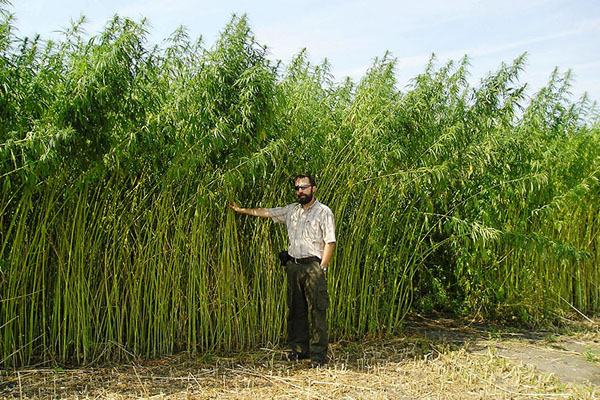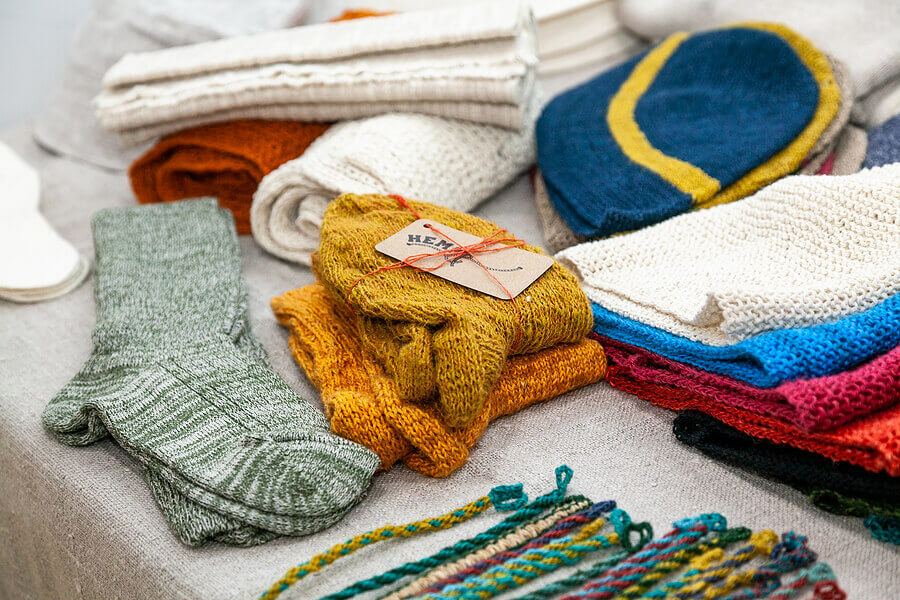Great Info To Picking Bamboo Clothes
Wiki Article
Why Is Hemp More Biodegradable, Durable And Regenerative Than Cotton?
Hemp is thought to be more biodegradable due its inherent properties and the method in which hemp is grown. Here's why- Biodegradability-
Natural Fiber- Hemp is a natural plant fiber and its fibers can be biodegradable. Hemp clothes and textiles break down in a natural manner over the passage of time. They return to the earth, not leaving behind a long-lasting trash. Compare this to synthetic fibers like polyester, which could require hundreds of years to break down.
The absence of synthetic additives Hemp textiles generally do not contain synthetic additives or chemical treatments that inhibit biodegradability. Some cotton textiles, on the other hand might have been treated with synthetic chemicals such as finishing and dyes that slow down biodegradation.
Durability-
Hemp fibers have a reputation for strength and durability. Hemp textiles and clothing are less prone to wear and tear and last longer compared to some cotton products. This means that hemp clothing can endure more washes and wear cycles before developing signs of deterioration.
Hemp fabrics are less prone to pilling than cotton. This is a factor that helps to prolong their life and overall quality.
Regenerative Agriculture-
Soil Health Hemp cultivation has regenerative properties when practiced in a sustainable manner. Hemp cultivating sustainably has a deep-rooted system which helps to help prevent compaction of the soil. This system of roots also helps to prevent erosion. This regenerative aspect can leave the land in better shape for the future growth.
Low environmental impactSustainable hemp cultivation practices usually require minimal pesticides and herbicide usage, which reduces the environmental impact. The cultivation of cotton using synthetic chemicals is more likely to cause erosion of soils and degrade the quality of water.
Water Efficiency-
Hemp needs less water for development than cotton. The fact that hemp is drought-resistant lets it grow in low-water conditions or with rain. It's an efficient use of water, especially for regions that are resource-limited.
Hemp is an excellent crop to incorporate into rotational systems. This can help improve the health of soil as well as reduce the likelihood of disease development and soil loss. Cotton farming is not as susceptible to crop rotation.
The versatility of hemp allows it to be utilized in a variety of applications like clothing, textiles papers, building materials and paper. This versatility implies that hemp cultivation could support various industries with sustainable and sustainable practices.
Although hemp has many benefits, it's essential to be aware that both cotton and hemp are grown sustainably or not, based upon farming practices and the processing methods used. Selecting hemp products that were manufactured using environmentally friendly and ethical practices can maximize its environmental advantages. In the same way, choosing organic cotton can help alleviate the environmental issues associated with conventional cotton production. Follow the recommended hemp clothes advice for site recommendations including patagonia double knee pants, patagonia island hemp pants, hemp sweatshirt, hemp athletic wear, hemp dress, hemp sweatshirt, hemp fleece fabric, hemp hoodie, jungmaven t shirt, hemp wear and more.

What Is It That Gives Hemp Fibres Its Breathable, Moisture-Wicking And Thermoregulatory Properties?
Hemp fibers have distinct structural and chemical properties which make them breathable. They are also moisture-wicking. These properties are a result of several factors. Microscopic structure- Hemp fibers possess pore-like hollow structures that allow air to circulate within the fibers. The porosity of hemp fibers makes them highly air-tight. The structure, when knitted or knitted, allows air to flow, promoting ventilation, and preventing heat and humidity from building up against the body.
Hemp fibers absorb moisture and are wicking. Hemp is hydrophilic which implies it has an incredibly strong attraction to water. Wearing hemp-based clothing can aid in absorbing sweat and moisture, which can keep you from feeling wet. Additionally, hemp fibers are efficient in wicking away moisture from your body and spreading it across a larger surface area of the fabric where it can evaporate more quickly. The hemp's moisture-wicking properties ensure that you stay dry and comfortable when doing physical activity or in hot temperatures.
Hemp fibers are naturally insulation. In cold temperatures, they hold the body's heat and offer warmth. They also permit excessive heat and moisture to escape during hot weather which helps to get cool. Hemp clothing is appropriate for all kinds of temperatures and activities because of its inherent thermoregulatory properties.
Hemp fibers are naturally antimicrobial qualities that are able in preventing the spread and growth of odor-causing bacteria. This attribute contributes to the freshness of hemp clothing even when exercising.
Hemp fibers are long-lasting and are extremely durable. This means that hemp clothing can endure repeated washing and wear without losing breathability or moisture-wicking properties. The durability of hemp clothing allows it to last for longer and reduces the necessity of replacing them and, thus, the environmental impact.
UV Protection Hemp fibers are an organic UV protector that shields the skin from damaging UV radiation. Hemp clothing is versatile because of its UV-blocking properties. It's ideal for activities outdoors.
These characteristics are inherent in hemp fibers and do not depend on chemical treatments or additives. The natural properties of hemp make it a sustainable and comfortable choice for clothing, especially for activewear, outdoor wear, and warm-weather clothing. Because hemp fibers are processed and woven and woven, they maintain their inherent qualities and make them a green practical fabric. Have a look at the top rated hemp clothes blog for more examples including hemp athletic wear, patagonia island hemp pants, hemp shorts, hemp tank top, afends jesse dress, nomad hemp wear, hoodlamb jacket, hemp fabric, hemp mens jeans, patagonia iron forge pants and more.

What are the main differences between bamboo and hemp fibers?
Both bamboo and hemp fibers are plant-based fibres that are used to create textiles. Each one has distinctive qualities and features. These are the main differences between hemp and bamboo fibers- 1. Plant Source-
Hemp- Hemp fibers are made from the stalks of the hemp plant, and specifically the bast fibers that are in the outer layer. Hemp is adaptable, quick-growing and has been used to make numerous products over the years.
Bamboo The bamboo fibres are made from the bamboo pulp plants. Bamboo is an extremely fast-growing grass known for its durability and rapid renewal.
2. Fiber Characteristics-
Hemp- Hemp fibres are known to be strong and long-lasting. They are a natural fiber that soften and become softer after washing, making them perfect for the production of durable textiles.
Bamboo fibers are soft and silky with a silky smooth texture. The fibers are less strong than hemp, but they are also more fragile. But they are extremely sought-after for their comfort when placed on the skin.
3. Texture and Feel-
Hemp Fabric Hemp is a fabric that has a texture and more coarse feel in its original state. While it is an incredibly comfortable fabric, the texture is different from bamboo.
Bamboo- Bamboo is smooth, soft, and silky. It's described as having a soft, cottony feel. It is extremely cozy.
4. Breathability (and moisture-wicking)-
Hemp Fibers Hemp fibers absorb moisture, are naturally and breathable. They keep you cool and dry in the summer heat.
Bamboo Fibers- Bamboo fibers possess the highest level of breathability and moisture wicking. They are made up of micro-gaps that improve their ability to regulate temperature and humidity. This keeps you at ease in all circumstances.
5. Environmental Impact-
Hemp Hemp can be considered an environmentally friendly fiber because of its high increase in growth, its low need for water and resistance against pests. These elements make it less necessary to use pesticides or herbicides. Hemp is also able to sequester carbon during its growing process.
Bamboo- Bamboo's sustainability is widely known. It is fast growing, requires little water and is a breeze to cultivate without synthetic pesticides. Moso is one of the most sustainable bamboo species.
6. Processing-
Hemp Fibers- Hemp fibers undergo a lot of processing that will be required to separate the outer bast from the inner wooden core. Processing can include retting and decortication, in addition to mechanical separation.
Bamboo- Bamboo Fibers can be obtained via a chemcial process referred to as the viscose/rayon process. It is done by using chemicals to break bamboo into pieces. Closed-loop systems can be used to reduce chemical waste in certain bamboo textiles.
7. Versatility-
Hemp- Hemp can be utilized to create a variety of items, such as clothes papers, textiles and building materials.
Bamboo- Bamboo is primarily used to make textiles and clothing. But, it may be used in other products including towels and bed linen.
Both bamboo and hemp are unique and have benefits for sustainability. Select between bamboo and hemp depending on the quality and characteristics you're looking for and your environmental preferences. Follow the recommended bamboo clothing info for website info including bamboo exercise clothing, angel dear bamboo pajamas, bamboo mens shirts, lisa frank bamboo pajamas, bamboo jeans brand, sustainable bamboo clothing, mens boxer shorts bamboo, bamboo dress shirt, kyte pajama, checkered bamboo pajamas and more.
